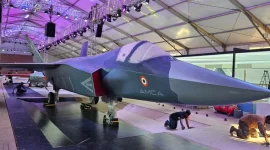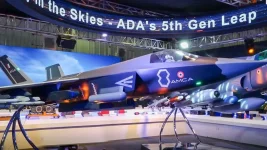- Views: 4K
- Replies: 28
India's push for self-reliance in critical defence technology has received a significant boost, with major private conglomerates including Larsen & Toubro (L&T), Godrej Aerospace, and the Kalyani Group committing to support the development of a powerful new jet engine within the country. This 110kN thrust engine is intended to power India's future Advanced Medium Combat Aircraft (AMCA).
The initial plan aims for this complex project to be spearheaded domestically, without direct involvement from an established global engine manufacturer. However, industry observers note that the project's ambitious timeline and technological demands might ultimately require collaboration with a foreign partner.
The programme aims to deliver the engine within a challenging timeframe of seven to nine years, a schedule considered necessary to keep pace with the development of the AMCA fighter jet itself.
Despite this goal, some experts within the defence industry express caution. Sources suggest that developing such an advanced military jet engine entirely using India's current capabilities could realistically take between 12 and 15 years. This potential mismatch between the target and estimated timelines has led to discussions about the possible need for international assistance to meet the schedule, even with strong private sector backing.
Companies like L&T, Godrej Aerospace, and Kalyani are already established players in the international aerospace market. They manufacture critical components for commercial aircraft engines used by global leaders such as Rolls-Royce and Safran. These Indian firms possess considerable expertise in high-precision manufacturing, advanced materials, specialised welding, and modern production techniques.
While there are overlaps in materials and processes used for commercial and military engines, an industry insider highlighted that military jet engines demand significantly higher performance, particularly concerning managing extreme stress and heat, and optimising thrust under combat conditions.
Although these foundational manufacturing skills are valuable, the primary challenge lies in India's lack of a fully developed ecosystem specifically for designing and producing cutting-edge military jet engines.
"Creating a completely new engine domestically is achievable, but the absence of a mature support system means it could take much longer than planned," one source commented. Such delays could potentially impact the overall schedule for the AMCA programme, which is vital for the Indian Air Force's future capabilities.
Meanwhile, the Gas Turbine Research Establishment (GTRE), the Defence Research and Development Organisation (DRDO) laboratory leading this engine project, is focused on maintaining full control over the engine's Intellectual Property Rights (IPR).
Officials at GTRE view complete IPR ownership as strategically crucial, ensuring India can independently modify, upgrade, and maintain the engine throughout its service life. A GTRE official indicated that securing these rights would enable future adaptations, potentially leading to higher-thrust versions suitable for next-generation aircraft.
Looking further ahead, GTRE officials have also expressed interest in exploring advanced concepts like variable cycle engines, which promise greater fuel efficiency and performance flexibility for future fighter aircraft. However, they clarified that such technologies represent a long-term objective.
"Developing variable cycle engine technology locally is feasible but will require time. The initial AMCA fighters will utilise fifth-generation level engine technology," the official stated, adding that success with the current 110kN engine is a necessary step towards these future advancements.
The participation of L&T, Godrej Aerospace, and Kalyani Group highlights the increasing capability and importance of India's private sector in national defence projects, aligning with the government's 'Make in India' initiative. Their experience in commercial aerospace provides a solid starting point.
Nevertheless, the transition to developing a sophisticated military-grade engine presents substantial technical hurdles and time pressures.
While the ambition for a fully indigenous 110kN engine is strong, the demanding timeline may necessitate pragmatic consideration of foreign collaboration to ensure the timely success of the AMCA programme.
Recent reports also suggest that discussions with international engine manufacturers regarding potential technology transfer or co-development partnerships remain ongoing.


